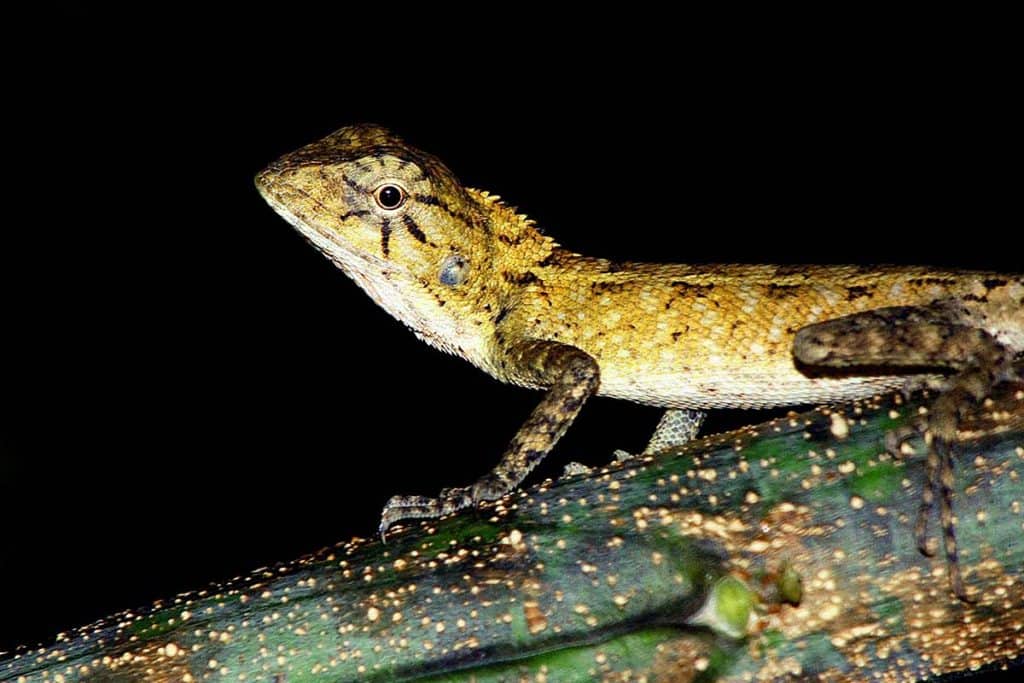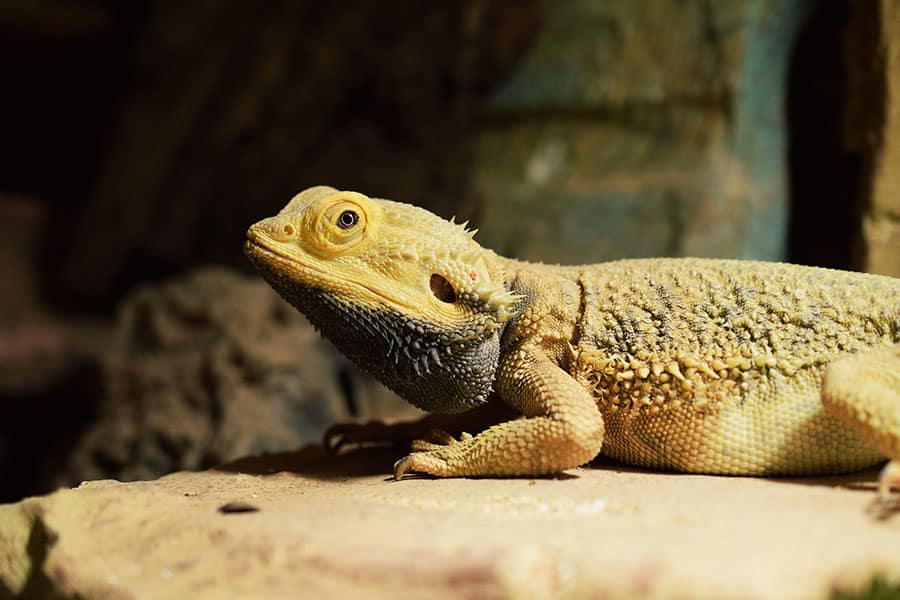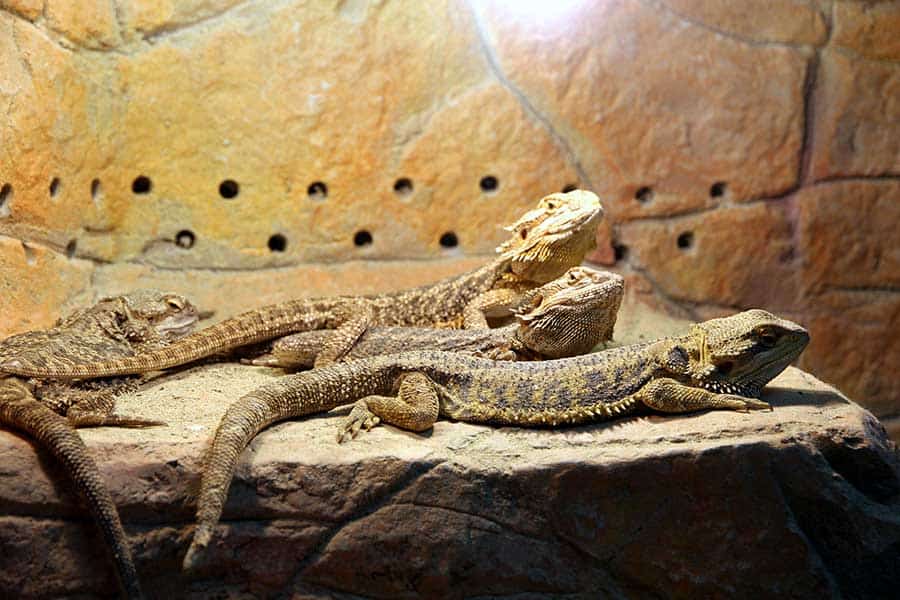Are you a reptile enthusiast? Are you a bearded dragon owner? If so, you may be curious about where bearded dragons live in the wild. While nowadays they’re a mainstay in most pet shops all around the world, they weren’t always so abundant and easy to purchase.
Like many other unique reptiles, amphibians, and other interesting species of animals, bearded dragons are native to Australia. They do not occur naturally anywhere else in the world.
These scaly bearded lizards belong to the genus Pogona. Although the Pogona vitticeps species, also known as the central or inland bearded dragon, is by far the most common, there are actually eight different species in the Pogona genus, which we will discuss individually.
Each species has its own niche in the Australian wilderness. The eight different species within the Pogona genus are all native to different parts of Australia, and some even live alongside each other. Read on to learn more about this diverse group of lizards, where they live, and how they are able to survive and even thrive in such harsh environments.
Where Do Bearded Dragons Live in the Wild?
Down Under, a.k.a. the Land of Lizards — that’s where bearded dragons come from.
Australia is notorious as the home of spiny, spiky, scaly, and scary things. While massive crocodiles, terrifying snakes, giant spiders, and even fearsome lizards that eat other lizards are very common, Australia is also the home to the adorable and docile bearded dragon.
The bearded dragon is perfectly suited to life in the Australian wilderness. Their scales protect them from the harsh sun and the rough sands of the outback. They are quick on their feet over the hot, dry ground. They are quick enough to rush at insects in the desert areas or in woodland. Sometimes they will sit and wait in hiding, perfectly camouflaged by the sand and brush, for insects to cross their path before they gobble them up.
In the wild, their coloring varies from a light tan to a warm medium brown. They have irregular, dark patterning down their sides that breaks up their shape and makes it harder for predators to spot them.
How Do Bearded Dragons Survive in the Wild?
Beardies are quite small, which makes them vulnerable to the many predators within the harsh and unforgiving Australian Outback. Their natural predators are terns, cats, foxes, birds, goanas, dingoes, and pythons.
However, these lizards have a trick or two up their spiky sleeves that they use as defense mechanisms. They have extra flaps of skin under their chin and along the sides of their bodies, commonly known as their “beard,” that they can puff up and expand, which makes them appear much larger and more menacing.
The spikes on their beard, on their heads, and along their bodies look hard and intimidating to predators. The secret is that these spikes are actually quite soft and are all for show!
Bearded dragons are also able to darken their beard, which looks quite scary while they open their mouth and hiss at scavengers or predators who initially thought the bearded dragon could be an easy meal.
What Do Bearded Dragons Eat in the Wild?
Bearded dragons are omnivorous. This means they eat a diet that consists of insects as well as plant matter. In the wild, they commonly eat beetles, ants, and any other ground-dwelling insects that happen to cross their path. Sometimes they will climb nearby branches in search of their next meal.
Wild beardies eat a variety of plant matter from leaves to flowers to fruit that are accessible to them. They are quite opportunistic, like most animals within the harsh Australian desert, and they are not very picky eaters.
The Eight Species of Wild Bearded Dragons
There are eight recognized species of bearded dragons in the Pogona genus. These diverse species are distributed far and wide over the whole of Australia’s deserts.
Pogona Vitticeps
Pogona vitticeps, also known as the central or inland bearded dragon, is the largest species of the eight naturally occurring types of bearded dragons. The vitticeps is also the most widespread and is the species most commonly kept as a pet. Its distribution covers almost all of eastern and central Australia.
Pogona Barbata
This species is also quite large and is very territorial. It is also known as the Eastern bearded dragon, as its population is primarily distributed along Australia’s eastern coasts.
Pogona Minor Mitchelli
The Pogona minor mitchelli species, also commonly known as the Western bearded dragon, is smaller than the vitticeps and much lighter. They are very rare and difficult to find in the wild, though they are known to live primarily within Australia’s western regions.
These dragons have deeper red and yellow banding on their tails, which makes them difficult to spot in dappled sunlight on branches.
Pogona Minor
The Pogona minor is a quite small species of bearded dragon and is also known as the dwarf bearded dragon. These little lizards are located in the western areas of Australia.
Pogona Nullarbor
This species likes flat land where it can travel quite fast. Unlike other beardies, this one has multiple rows of spikes down its back. This species can be found in the region between Kalgoorie and Port Augusta.
Pogona Minor Minima
This is a very small species in the Pogona genus. It is also known as the Abrolhos dwarf bearded dragon. They are semi to mostly arboreal lizards. This species is not very common and is mostly found within western Australia.
Pogona Henrylawsoni
Also known as the Rankin’s dragon, this species likes to climb rocky outcrops and low-lying vegetation. Its population distribution is almost strictly in Queensland, Australia, making it a bit harder to find than some of the other species of beardies.
Interestingly, this species was named after the well-known Australian poet and author, Henry Lawson.
Pogona Microlepidota
Also known as the Drysdale River bearded dragon, this species is the smallest of all the bearded dragons. It is quite rare, as it is only found in North Kimberley in Western Australia.
5 Bonus Wild Bearded Dragon Facts
- All eight species of bearded dragons are known as agamid lizards. The Agamidae family of lizards consists of over 300 different species, and most of them are native to parts of Asia, Africa, and Australia.
- When they feel threatened by predators in the wild, bearded dragons usually puff up the pouch of skin under their chin, giving them a spiky-looking beard. This is where they get the “bearded” part of their name!
- Since the 1960s, it has been illegal to export wild bearded dragons out of Australia! All of the bearded dragons that are ethically bought in the rest of the world are now captive bred specimens.
- Bearded dragons are very territorial and live alone until it is time for mating. Male beardies will fiercely defend their territories and often fight other males. Beardies will bob their heads in a sign of dominance or wave their arms as a sign of submission.
- Although they haven’t been domesticated for very long, bearded dragons make excellent pets for newbie reptile owners because their care requirements are simple and they are hardy, docile, and friendly lizards.
Wild Bearded Dragons FAQs
Do wild bearded dragons bite?
Bearded dragons can have a nasty bite, particularly those in the wild that haven’t been properly socialized. However, they only bite when they feel they have a reason to, and captive dragons are much more docile than their wild counterparts.
However, bites can be avoided by carefully watching your beardie’s behavior for stressed-out or aggressive body language.
Do bearded dragons live in holes or burrows?
Yes, both wild and captive beardies love to dig! They especially like to burrow in the sand during their brumation periods, though they will often come out to search for food or to bask in the sun.
In captivity, it can be helpful to provide your beardie with a “dig box” full of sand or another substrate for them to express their natural behaviors.
Can bearded dragons eat red meat?
Wild bearded dragons do occasionally eat meat to survive, though it isn’t very healthy for them. They will sometimes even eat small rodents or small lizards.
However, captive bred beardies (the ones found all over the world as pets) should not be fed red meat, as their digestive systems are not built for that kind of food anymore. They have been bred on diets of insects and plants in captivity.
Feeding your bearded dragon red meat also puts them at risk of parasite infection.
At the Tail End of Things…
Hope you got some information about your bearded dragon here. This knowledge beardie species and where bearded dragons come from can help you take care of your pet better.
Bearded dragons are naturally found in Australia. The different species of the Pogona genus are found all over the country. They all have really cool defense mechanisms that keep them safe in a land full of predators, making them perfectly suited for such a harsh environment.
These fascinating defense mechanisms, their general behavior, and their surprisingly docile and laid-back personalities are also what make them great pets for herp enthusiasts all over the world.




